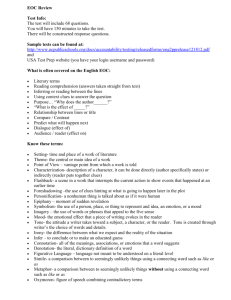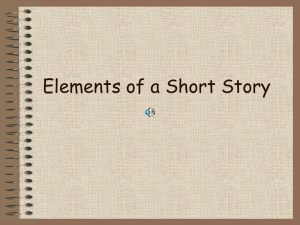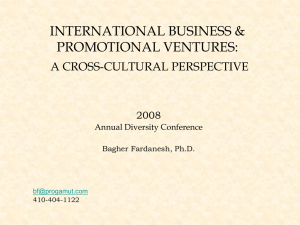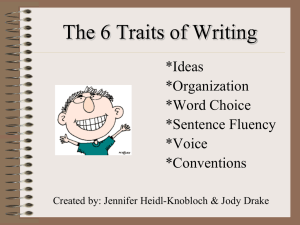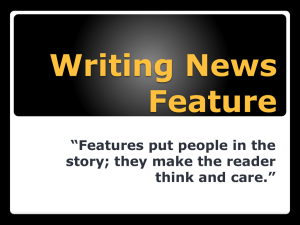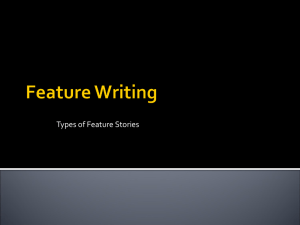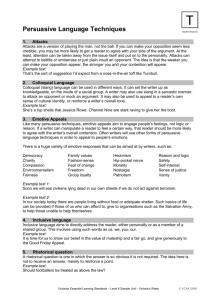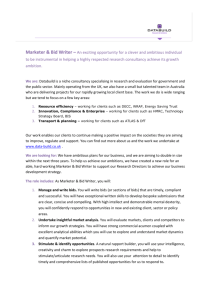technical writing
advertisement
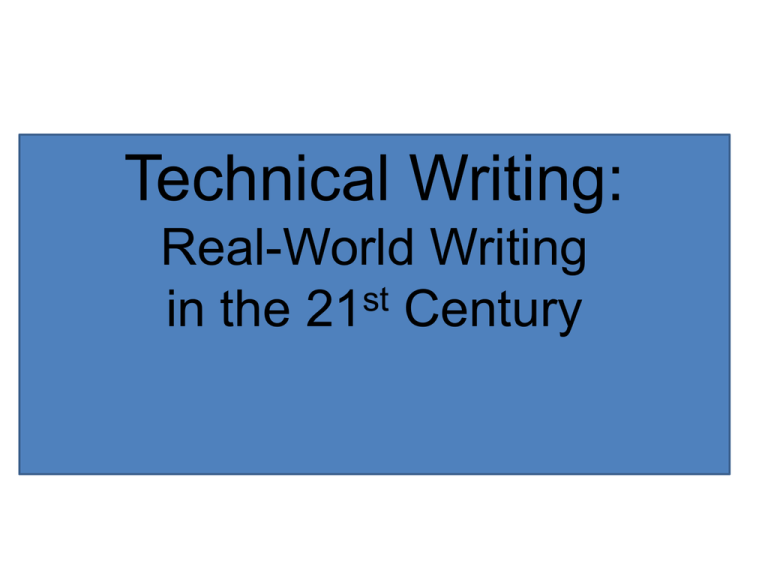
Technical Writing: Real-World Writing st in the 21 Century What’s Technical Writing? Written communications done on the job, especially in fields with specialized vocabularies, such as science, engineering, technology, and the health sciences. OR Technical writing is writing that is done for the purpose of educating, informing or directing someone on how to do something. Technical writing is significantly different than other types of writing such as narrative, because technical writing is intended to impart to the reader some specific skill or ability. Technical writing isn't for everyone. It is often very detail-oriented and usually involves writing within fields where some advanced knowledge is required. Sub Types The Goal of Technical Writing “The goal of technical writing is to enable readers to use a technology or understand a process or concept. Because the subject matter is more important than the writer's voice, technical writing style uses an objective, not a subjective, tone. The writing style is direct and utilitarian, emphasizing on exactness and clarity rather than elegance or allusiveness. A technical writer uses figurative language only when a figure of speech would facilitate understanding." Characteristics of Technical Writing Technical writing, just as any other form of writing, has certain characteristics which distinguish it from other types of writing. It is very different from writing opinion pieces, essays, prose, non-fiction or fiction. It is clear and straight forward. If you are interested in technical writing for professional purposes, it is very important to know that this type of writing require that the writer stick to the subject matter and relay information in a clear and concise manner. The language is very direct and straight to the point. The writing will avoid words that people do not understand and will avoid an (eloquent)persuasive writing style. It is very detailed and informative. The perfect example of technical writing is a textbook. The written contents of most textbooks is geared to providing information by describing the subject matter as fully as possible. It is very structured. This type of writing has a very obvious composition that makes it easy for the reader to follow along. Solid structure is needed with technical writing as it allows the audience to easily access the information as needed. Uses of Technical Writing With understanding the characteristics of technical writing, you can better comprehend how this type of writing is used. Technical writing is found everywhere. There are a variety of different types of writing which use a technical style. For example, instructions of all sorts are a perfect example of technical writing. When you open up an instruction manual, as the reader, the goal is to be informed about the product so that you can use it as efficiently as possible. Lab reports are another example of technical writing. The main purpose of a lab report is to explain the occurrences in a lab so that others will be able to gain information. Driving directions can be considered a type of technical writing as the goal is to clearly and efficiently provide instructions on how to go from point A to point B. Overall, technical writing is a very useful form of writing that is encountered by everyone almost every day. Many More uses………………… What do we learn in Technical Writing? • Action Plans • Advertisement • Agenda • Audit Report • Book Review • Brochure • Budget • Business Letter • Business Plan • Catalog • Contract • Critique • Data Book or Display • Description • Diagram, Chart, or Graph • Editorial • Email • Feasibility Report • Field Test Report • Incident Report • Informational Form • Informational Poster • Informative Summary • Instructions • Interview Questions • Itinerary Types of Technical Writing There are three main types of technical writing: • End-user documentation: This type of writing includes documents where the writer explains a topic to a novice so that they can understand technical terms and apply them in a real-life situation. Examples of end-user documentation might include: • "Blackberry for Dummies" - that teaches you how to use your new cellular phone and that is written in order to cater to someone who has never before used a cell phone or who is not a cell phone expert • A manual that comes with a computer • A manual that comes with a video game system, such as the PS3 users guide • Traditional technical writing: This is writing that is geared to an audience already at least somewhat familiar with a technical field such as engineering or politics. Examples of traditional technical writing might include: • A whitepaper published in an engineering journal about a new system that has been devised. • An article published in a law review that caters to lawyers • An article in a medical journal summarizing an experiment that has been conducted and written to a medical audience. For example, articles published in the New England Journal of Medicine would fall into this category. • Technological marketing communications: This is writing used in promotional marketing such as fliers and promotional brochures that would entice a person to purchase a certain product or service. These might include: • A promotional ad outlining why you would want to purchase a new computer and explaining the features of that computer • A promotional ad explaining why you would want to purchase a new cell phone, outlining the phone's features • A promotional ad explaining why you would want to purchase a new mp3 player and outlining the phone's features, such as an ad for the Creative Zen Mozaic Mp3 player Successful Technical Writing When carrying out a technical writing assignment, you must remember to follow what is known as the three ‘Cs’ and ask yourself the following questions: • Is it clear? • Is it concise? • Is it complete? Because technical writing is so often aimed towards those who may be unfamiliar with technical jargon and terminology, it is important that a technical writer uses clear and unambiguous language in their assigned piece. • If the writing is too full of technical language, the message may not come across as intended. • If the information being written about is provided in a convoluted and round-about way, the message is likely to be lost entirely. Straight forward and to the point is always best. If a technical writer’s information is incomplete, it inhibits the audience’s understanding of the topic and can, in some cases such as instruction and safety manuals, prove dangerous. Above all, technical writing needs to be very clear and concise to be successful. A.WHAT IS TECHNICAL WRITING ?? • Technical writing is writing that is done for the purpose of educating, informing or directing someone on how to do something. • It is often very detail-oriented and usually involves writing within fields where some advanced knowledge is required. Spectrum of technical writing Attributes of technical writing IMPERSONAL PERTAINS TO TECHNICAL SUBJECT CONSISE TECHNICAL WRITING SPECIFIC STYLE & FORMAT CITES OTHERS CONTRIBUT -ION DIRECTED ARCHIVAL B. WHAT IS GENERAL WRITING ?? General writing is a form of writing that is done for the purpose of expressing thoughts, emotions, personal experiences of the author. COMPARISON TECHNICAL WRITING CONTENT GENERAL WRITING FACTUAL & STRAIGHTIMAGINATIVE, FORWARD STANDARD STRUCTURED FORMAT INFORMAL, ARTISTIC NON-STRUCTURED FORMAT TO INFORM & PERSUADE TO ENTERTAIN & CAPTIVATE OBJECTIVE SUBJECTIVE USES 3RD PERSON USES 1ST PERSON VOCABULARY REQD. SPECIALISED EVOCATIVE AUDIENCE AVAILABLE SPECIFIC GENRAL ARCHIVABILITY ARCHIVAL NON-ARCHIVAL STYLE PURPOSE TONE VOICE USED SIMILARITY Both writings are used for engaging the reader. Both writings must be free from grammatical errors.

